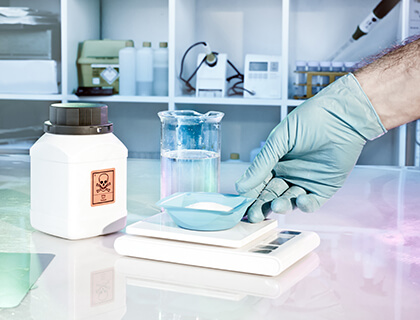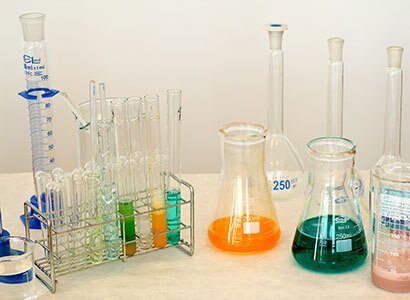This is a lesson summary. The full lesson can be viewed by purchasing an online course subscription.
Learning Objective
In this lesson we will learn about the properties of solutions and look at examples of different types of solutions. We will also learn how solubility is related to the components of a solution and how it is affected by temperature and pressure.
Learning Outcomes
By the end of this lesson you will be able to:
- Define solute, solvent and solution.
- Describe the process of dissolving.
- Distinguish between the terms soluble and insoluble, with examples.
- Distinguish between concentrated and dilute solutions.
- Define solubility and saturation point.
- Describe saturated and supersaturated solutions.
- Explain how temperature and pressure affect the solubility of solids and gases in liquids.

(Image: tilialucida, Adobe Stock)
Lesson Summary
- A solution is a homogeneous mixture containing a solute dissolved in a solvent.
- A solution has a different melting and boiling point to the original solvent.
- When a substance (solute) dissolves, its particles separate and disperse evenly throughout the dissolving medium (solvent).
- Only substances that are soluble in a particular solvent can dissolve and form solutions.
- Insoluble substances cannot dissolve and result in heterogeneous mixtures when added to a solvent.
- A concentrated solution has a high proportion of dissolved solute, whereas a dilute solution has a low proportion of dissolved solute.
- For coloured solutions, the colour intensity will reflect how concentrated or dilute the solution is.
- Solubility refers to how much of a particular solute can dissolve in a given solvent.
- Solubility depends on both the solute and the solvent.
- Solubility is also affected by environmental factors such as temperature and pressure.
- Increased temperature results in increased solubility of solids in liquids.
- Increased temperature results in decreased solubility of gases in liquids.
- Increased pressure results in increased solubility of gases in liquids.
- A saturated solution contains the maximum amount of solute dissolved in a solvent, at a particular temperature and pressure.
- A supersaturated solution contains more solute than can normally be dissolved. These result from dissolving solids at increased temperature or gases at increased pressure.
- Solutions can be gases liquids or solids.
- Similarly, solutes be can gases liquids or solids.
- Solutions can contain multiple solutes.

(Image: bdyczewski, Pixabay)
(Header image: Petr Kratochvil, Public Domain Pictures)
